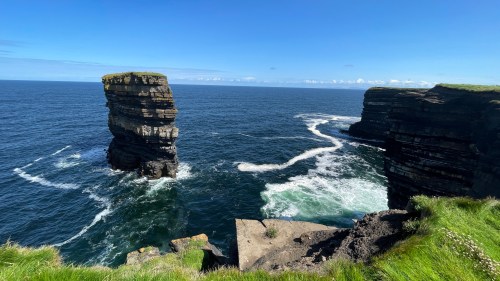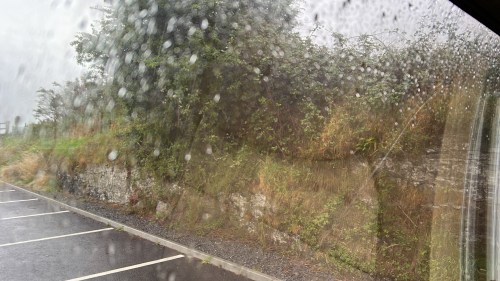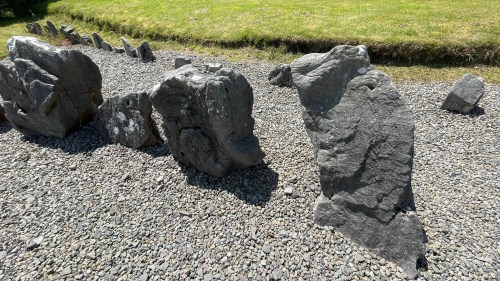Long ago, we mentioned to an Irish friend that we planned time in County Mayo. “There’s not much there,” he warned.
We beg to differ. After spending more time here than expected, thwarted by the weather and waiting for the parish priest to return, we’ve come to appreciate the varied landscape and the way of life.
We take every blue sky opportunity between storms to drive the back roads and see what we can see. One day we watched as a farmer trained his sheep dogs. Amazing herders, they are.

Turf is still used for fuel in many places, although there are new regulations underway to ban the burning of polluting solid fuels like coal, wood and peat briquettes, and new houses are built without chimneys. Turf cutting is also being banned to halt the destruction of the fragile environment and because newer mechanical methods of cutting reduces the carbon sink properties of the bog. Nevertheless, we see turf drying wherever we go.


Mayo is flat as a pancake in parts and quite hilly in others and on dry days we find the landscape breathtaking.






As usual, we haven’t done any planning or research so as we crossed into County Galway this stately building took us by surprise and precipitated a quick detour.

It’s Kylemore Abbey, home to an order of Benedictine nuns. We didn’t visit but stayed long enough on the grounds to appreciate how beautifully the building nestles into the forest at the foot of the mountain.

The clouds were rolling in and we knew there was a storm coming. We wanted to fit one more stop into our day before we sought shelter.
I had spied this food truck on the map and if I know my man, I know he’ll be pretty excited about a crab sandwich. I assumed there’d be nothing for me, but luckily there’s another truck across the car park with delicious spicy roast sweet potato tacos. Win-win.



We would love to have stayed at that pretty place overnight but it wasn’t permitted so we dashed into Clifden hoping for a supermarket resupply before the rain started. We didn’t make it. It rained so hard even the local shoppers were reluctant to run to their cars. There was a backup at the exit as we all waited. And waited. And waited. One by one they gave up and dashed to their vehicles. Except us. Our van was parked up the hill in another car park and we kept hoping for a wee break in the downpour so we wouldn’t be sodden when we got home. A campervan festooned with dripping clothing is not a pleasant place to be.

We did eventually get a break and made it back to the van with minimal dampness and drove to our planned sheltered parkup. The storm rolled in as predicted and we battened the hatches and hunkered down.








































































































































































































